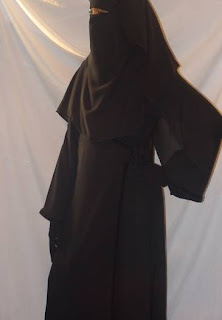On this page I would like to post Traditional or National dresses worn in many Muslim countries ... So first let's see what National dress means? Dress is the identity of any nation. It is the thing which tells you the nationality of a person without even asking. Every country has its own traditional dress.



Kurta is also an important traditional dress item. It is similar to a shirt but is quite loose in fitting. The length of the kurta goes up to the knees of the wearer. It can be worn with either jeans or a shalwar. The Kurta is also worn by women in many western countries.


In Pakistan, kurta holds importance amongst both men and women. Different materials can be used to make a kurta and normally it is up to the wishes of the user that what style and material one wants to be used in one's kurta.


Men's kurti

The Pakistani culture is very rich as far as clothing is concerned. These clothes are famous not only in Pakistan but also in Afghanistan, India and Bangladesh.
Ok let's move on now to another country ....In Saudi Arabia, as in all countries, climate, usefulness, and custom influence dress.
Men and boys wear the thawb, an ankle length piece of clothing which is long and fits loosely. Athough the thawb covers almost the entire body, it allows air to circulate freely. This piece of clothing was traditionally made of cotton, but it is also made of other kinds of cloth.

 Men also wear a ghutra an iqal on their heads. This is a square head cloth with a double circle of black rope or cord to hold it on the head.
Men also wear a ghutra an iqal on their heads. This is a square head cloth with a double circle of black rope or cord to hold it on the head.Today Saudi men and boys wear this head cloth not only with the thawb, but also with work clothes. This headcloth comes in plain white and in red-and-white checks. It is folded diagonally to make a triangle.
Women in Saudi Arabia wear a long dress with long sleeves. It is called Abaya
The abaya (Arabic عباية, plural abayat عبايات) is an overgarment worn by some women in parts of the Islamic world. It is the traditional form of hijab, or Islamic dress, for many countries of the Arabian peninsula such as the United Arab Emirates, where it is the national dress.
Traditional abayat are black, and may be either a large square of fabric draped from the shoulders or head, or a long caftan.


The abaya covers the whole body except the face, feet, and hands. It can be worn with the niqab, a face veil covering all but the eyes. Some women choose to wear long black gloves, so their hands are covered as well.
Abaya with niqab
 Niqab (face veil)
Niqab (face veil)
Clothing
Traditional clothing forms a part of Turkish traditional culture. In the past the Turks would weave their own clothing and make dyes from natural plant ingredients, in a way that reflected their feelings in the designs they created. Each region had its own characteristics in the way of clothing, headwear, scarves and socks, which have all, through the centuries, attracted interest and admiration.
The turkish scarves are famous for its uniqueness and rich colors ..



Most common dress in Turkey is Jilbab -its a long coat with buttons ...
There are different styles and colors of Jilbab ....



Culture of Morocco - Morocco is a country of multi-ethnic groups with a rich culture and civilization. Through Moroccan history, Morocco hosted many people in addition to the indigenous Berbers, coming from both East (Phoenicians, Jews and Arabs), South (Moors and Sub-Saharan Africans) and North (Romans and Vandals).
The traditional dress for men is called djellaba; a long, loose, hooded garment with full sleeves. For special occasions, men also wear a red cap called tarbouche and mostly referred to as Fez. Nearly all men wear balgha (بلغه) —- those soft leather slippers with no heel, often in yellow. Many women do as well but others wear high-heeled sandals, often in silver or gold tinsel.
djellaba for men


The women’s djellabas are mostly of bright colors with ornate patterns, stitching, or beading, while men wear djellabas in plainer, neutral colors. Women are strongly attached to their "Moroccan wardrobe", despite the financial costs involved. The production of such garments is relatively expensive, as most of the work is done by hand.


Kaftan or "tk'chita' is the special occasion dress ...The Moroccan kaftans are unique ..

Despite the costs involved most women purchase a minimum of one new kaftan or "tk'chita" every year, normally for a special, social event, such as a religious festival or a wedding. Nowadays, it is an unwritten rule that Moroccan dress is worn at such events.




I will continue with more countries inshaAllah
Feel free to comment










No comments:
Post a Comment